Order of Operations Worksheets
Brackets (A)
Year groups: 7, 8, 9
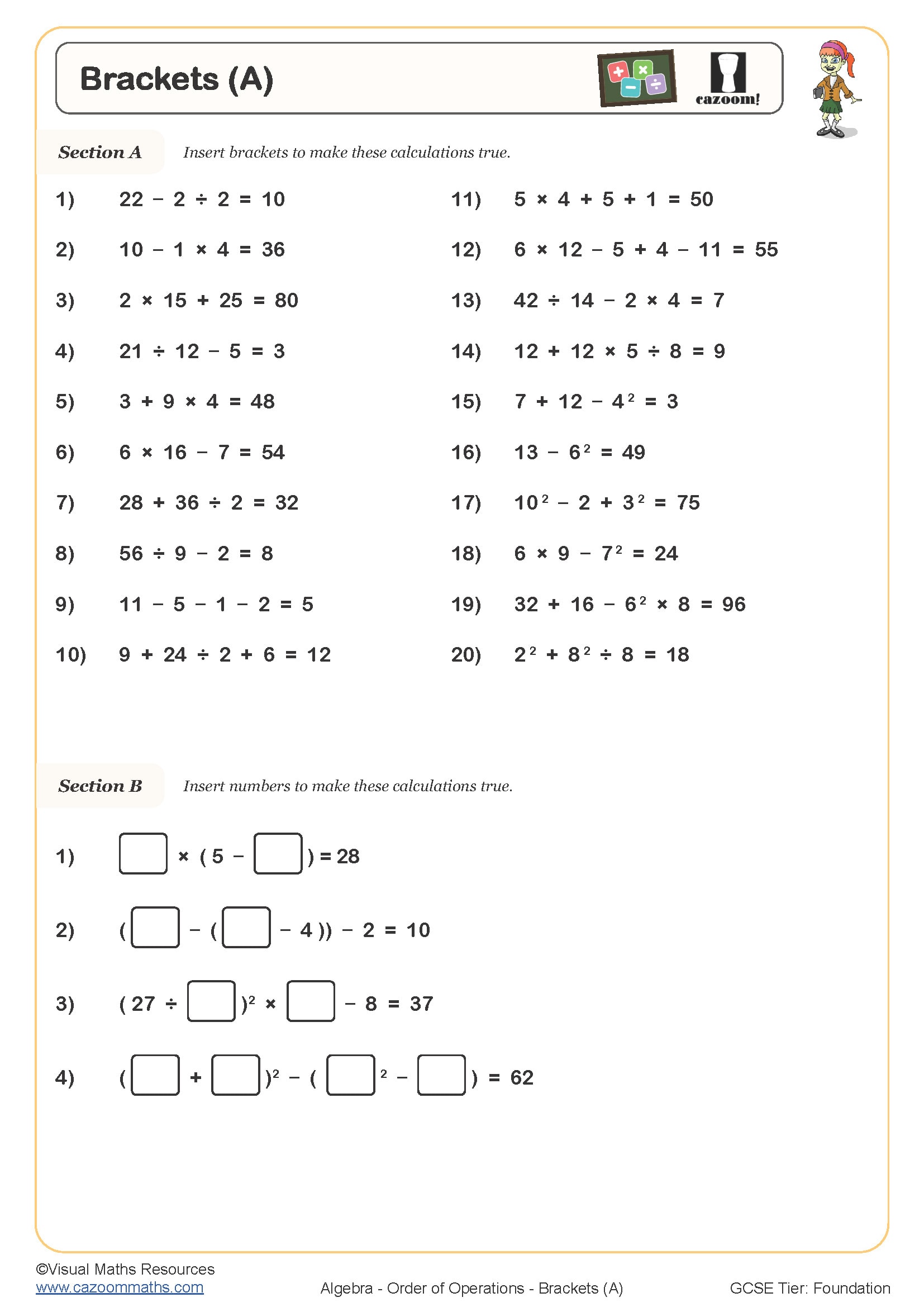
Brackets (B)
Year groups: 7, 8, 9
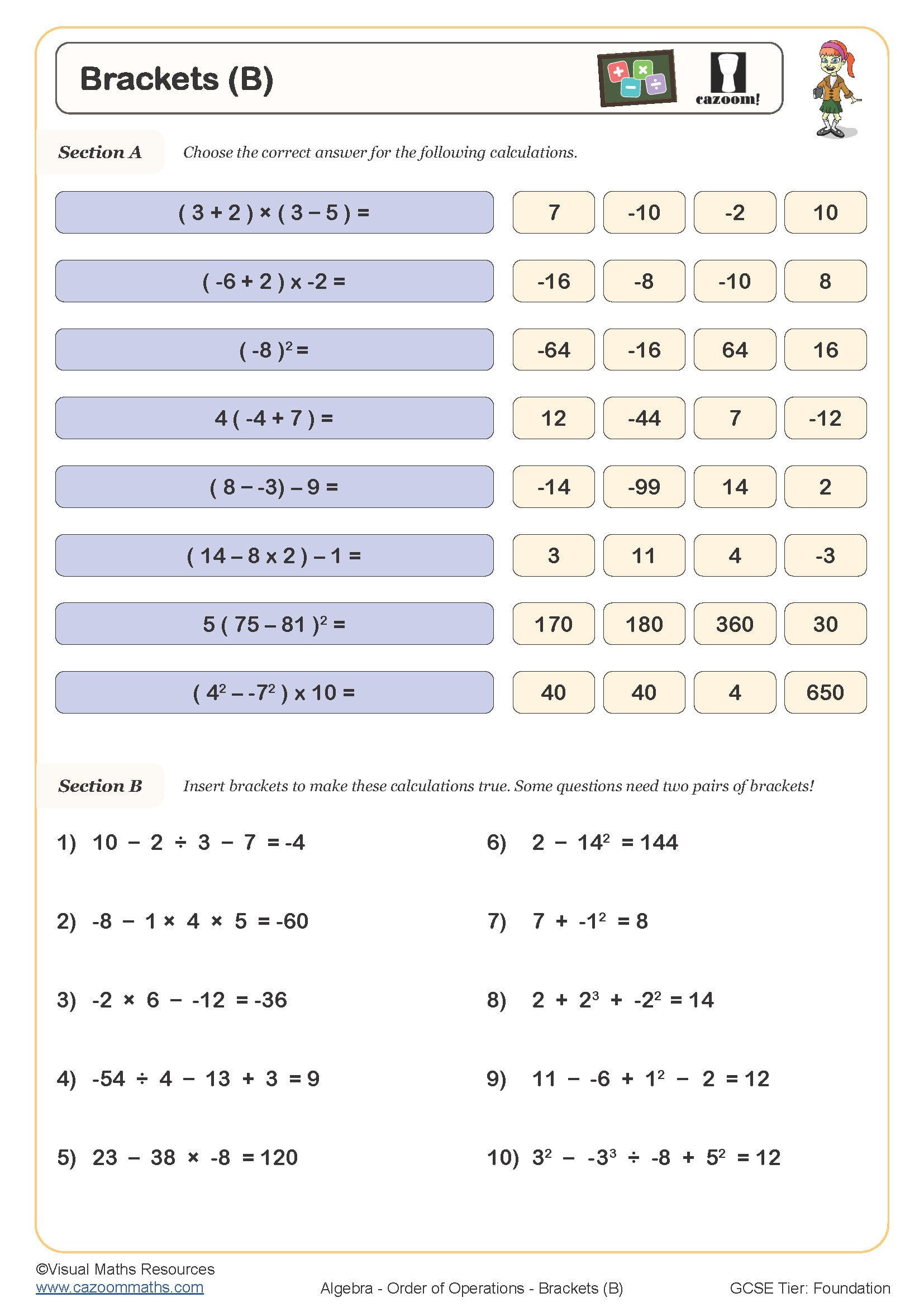
Calculator Predictions
Year groups: 7, 8
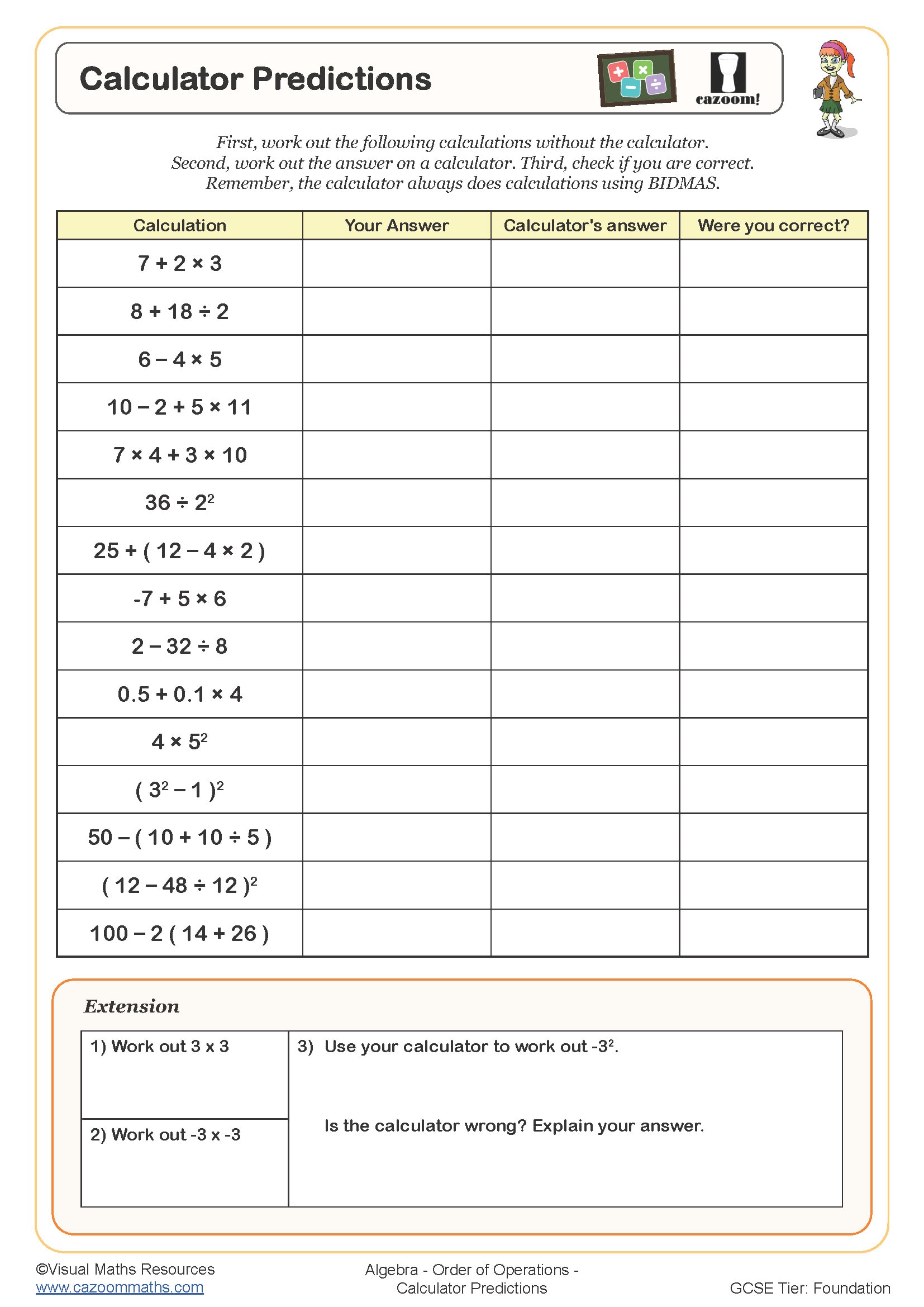
Order of Operations - Calculating with Indices
Year groups: 7, 8

Order of Operations - Addition and Subtraction
Year groups: 7

Order of Operations - Introducing Brackets and Indices
Year groups: 7, 8
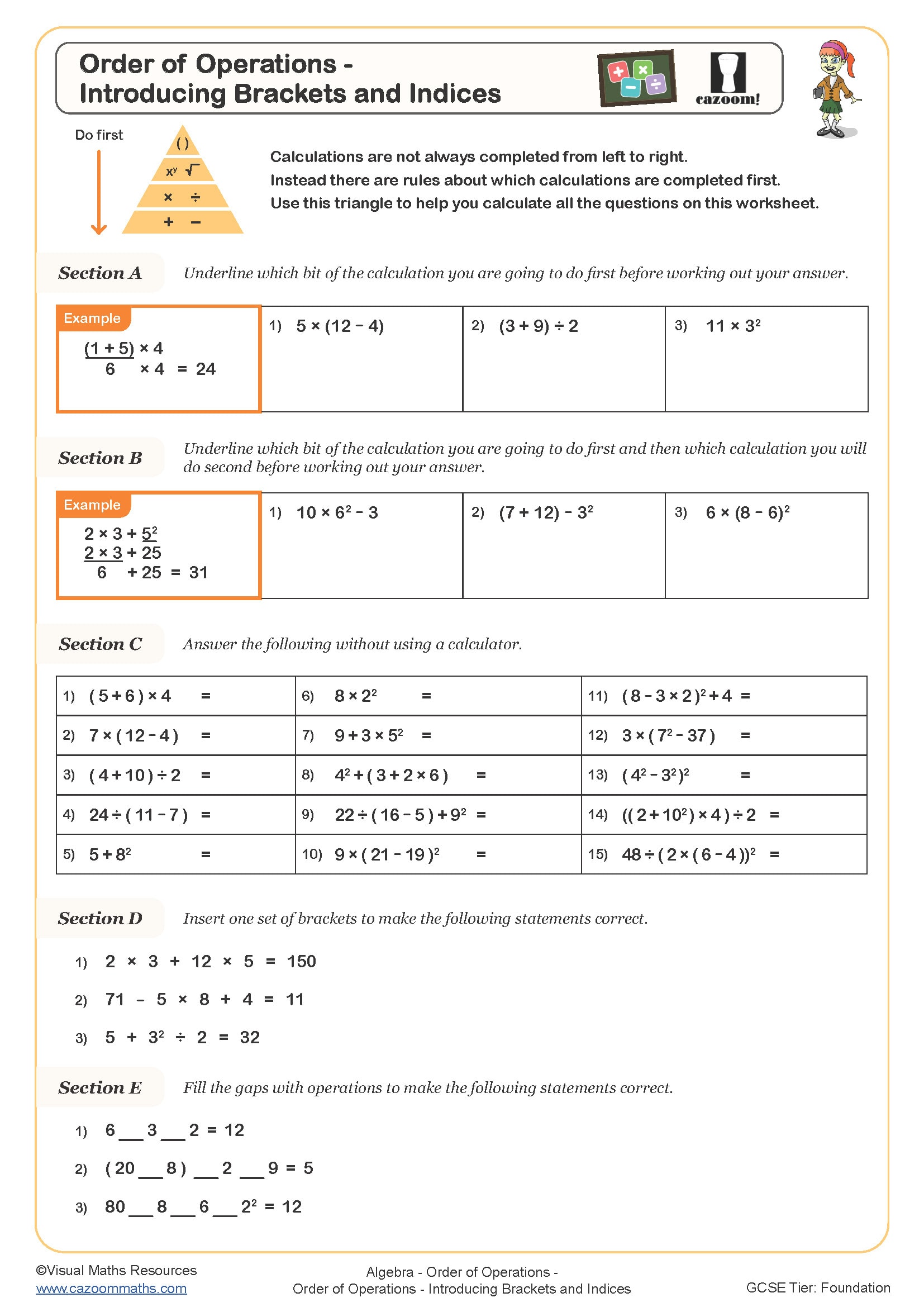
Order of Operations - Multiplication, Division, Addition and Subtraction
Year groups: 7, 8
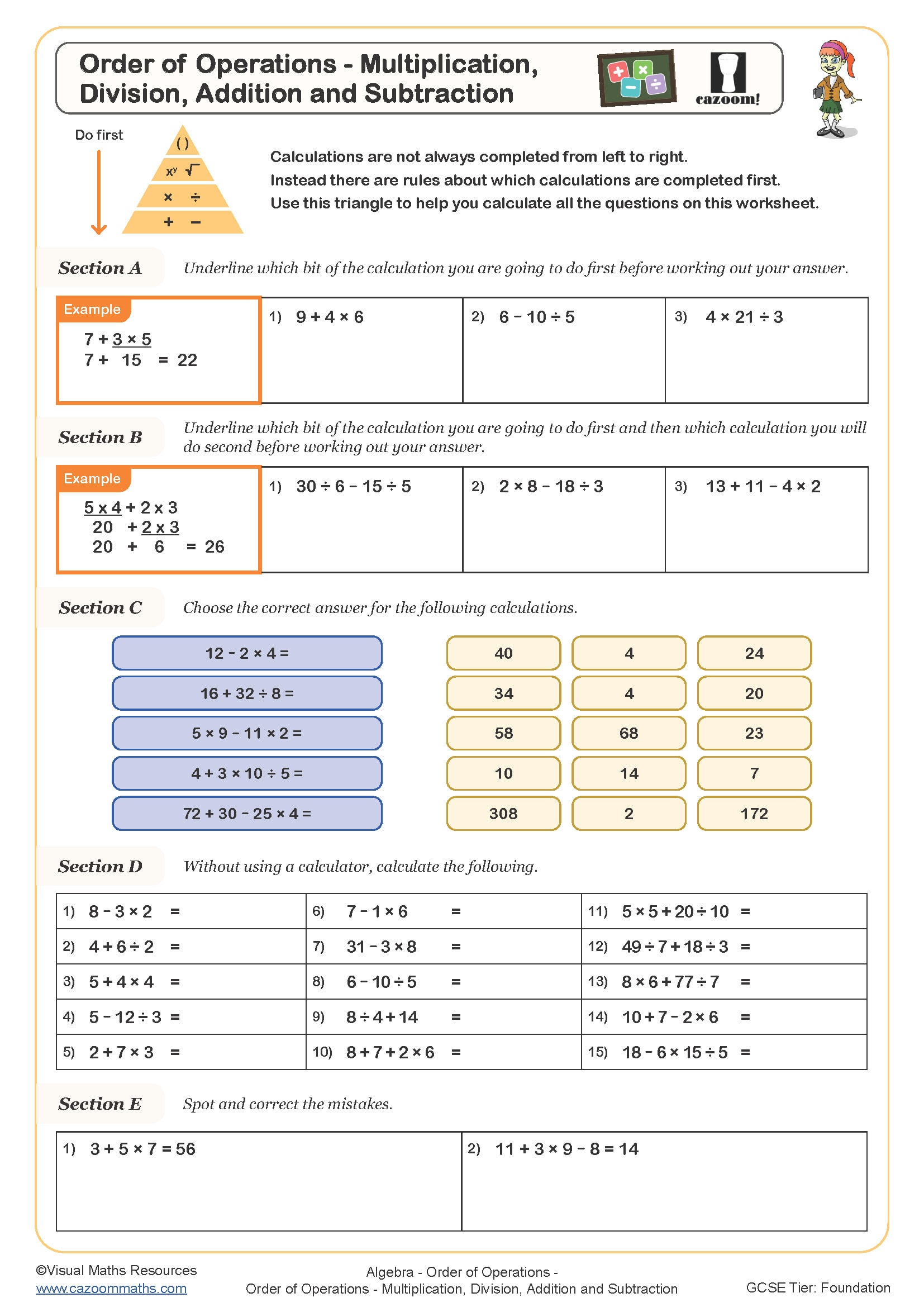
Order of Operations - Understanding Fractions as Division
Year groups: 7, 8, 9
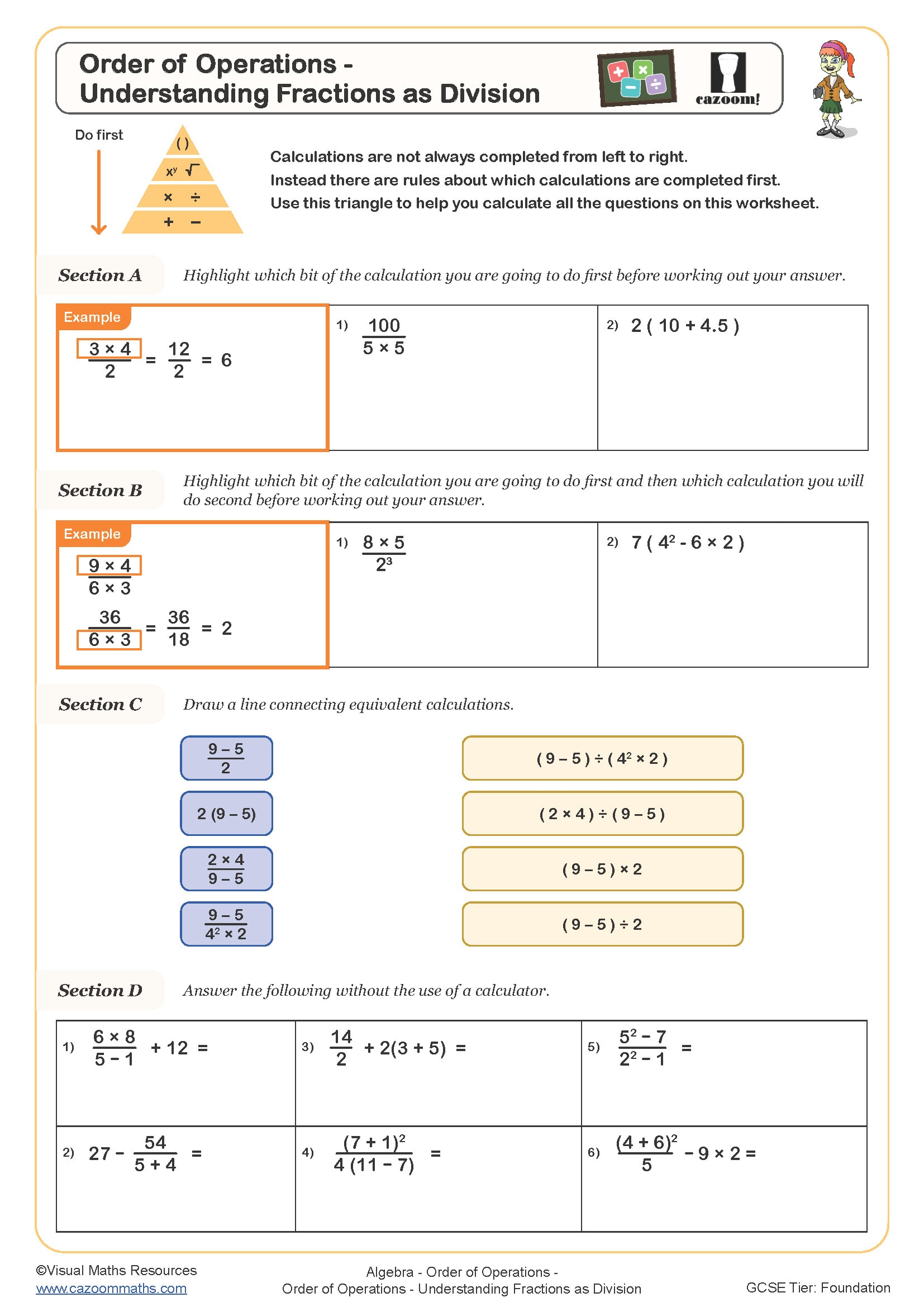
Order of Operations – Expression Trails
Year groups: 7, 8

PRINTABLE PDF ORDER OF OPERATIONS WORKSHEETS WITH ANSWERS
Check out our Order of Operation worksheets to improve your child’s or student’s knowledge of mathematical equations related to the BODMAS rule. These worksheets include answers, are created in easy-to-download PDF format, and are designed to simplify complex topics related to whole numbers. These maths worksheets are excellent resources that will make the whole learning process more fun and interesting, along with helping your students or children improve at solving problems.
Understanding The Concept Of BODMAS
BODMAS is a simple rule in maths that helps us solve problems step by step. The name stands for Brackets, Orders (like squaring numbers), Division and Multiplication, and Addition and Subtraction. Using BODMAS, we know the correct order to do our sums, ensuring we always get the answer. It’s like having a straightforward way of solving maths, so everyone can follow along and get the same result. It’s helpful for anyone keen to get their maths spot on every time.
What Is the BODMAS Rule?
BODMAS is a simple rule guiding the sequence to tackle mathematical problems. Representing Brackets, Orders (powers or roots), Division and Multiplication, and Addition and Subtraction ensures consistency in solutions. It prioritises calculations within brackets, powers, division or multiplication, and finally, addition or subtraction. This method ensures uniform answers in maths, providing a clear roadmap for problem-solving.
Here is an example of the Order of Operations-
Suppose we need to solve 7 + 6 x 2
In this case, if you didn’t follow the BODMAS rule and did the addition and then the multiplication, you’d get a different and incorrect answer. Therefore, you need to follow the BODMAS rule.
As there are no brackets and Orders in this equation, you need to begin with Division and Multiplication: There’s a multiplication. So, 6 x 2 = 12.
Addition and Subtraction: Now, add 7 + 12 = 19.
Use of Order of Operations in Real Life:
Understanding the order of operations in maths, often called BODMAS, is practical in many everyday situations. It ensures we approach calculations consistently and correctly. For instance, when working out household budgets or comparing discounts in a shop, we need to calculate correctly to arrive at accurate figures. Even tasks like adjusting a recipe’s ingredients or determining travel costs become more straightforward. The order of operations offers a clear structure for problem-solving, making daily decisions more informed and reliable. It’s a fundamental tool in making real-world maths decisions precise and consistent.